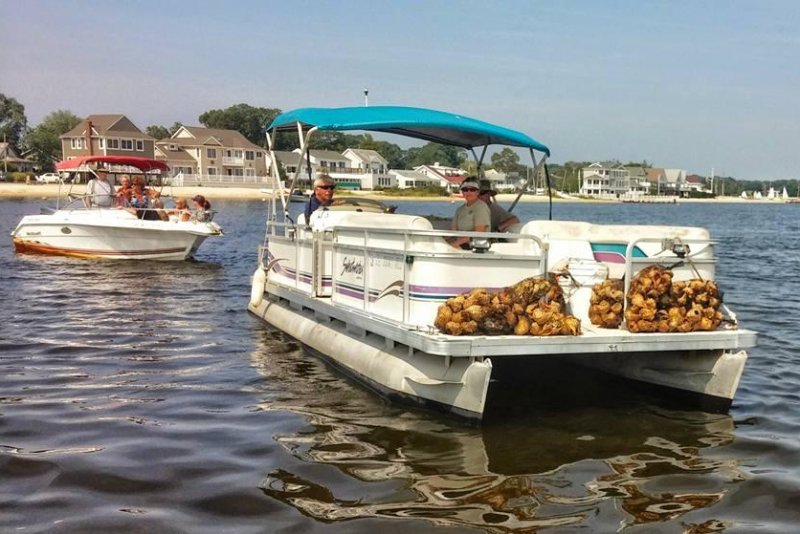Some of the baby oysters at the start of their journey to the artificial reef. Photo by American Littoral Society/Facebook
OCEAN COUNTY, N.J., July 30 (UPI) -- On Wednesday, a conservation group released thousands of a baby oysters into New Jersey's Barnegat Bay, where an artificial reef has been constructed.
Scientists, students and volunteers with the American Littoral Society spent a month rearing the tiny mollusks, part of a project to restore the oyster population and clean up the water in the brackish bay. Before that, the environmentalists spent weeks constructing a reef using more than 3,000 cubic feed of shells. The shells were spread out over a half-acre on the bay floor near Good Luck Point.
Project leaders are hopeful that some of the 21,000 oysters will take hold there and populate the reef -- proving to others that the seemingly impossible task of reestablishing sea life in the bay can be done, with the right amount of resources and stubbornness.
"This oyster reef project is like putting the pieces back into the bay's ecosystem that are gone," said Tim Dillingham, executive director of the American Littoral Society, told NJ.com. "We're going to bring the oysters back to this bay only by pure willpower and lots of hard work."
What is now just 21,000 oysters, began as 1.5 million oyster larvae. The tiny oysters were raised in a spat tank on a mini artificial reef of oyster and conch shells. That's a survival rate of 1.4 percent. Less than the goal of 5 percent, but better than the survival rate in the wild.
Part of the project is proving that commercial and recreational oyster farming is viable. There are oysters out there, the group says, they just have nothing to grasp hold of. But the main goal is restoring ecological health.
"Having the oysters there will bring in the fish and will bring in the crabs," said Christine Thompson, a restoration scientist with the group. "The more oysters we have, the more water they'll be able to filter."
"Barnegat Bay is dying," Dillingham recently told NJTV News. "It's a victim of over development of the watershed, polluted runoff being discharged into it and just not taking care of it for years. Our effort here is part of the Littoral Society's attempt to help restore this bay back to health for the community and for the nature that lives in it."
The work of Thompson and Dillingham has been aided by students with Monmouth University's Urban Coast Institute. And a modest grant from the NOAA made the oyster restoration project possible.















